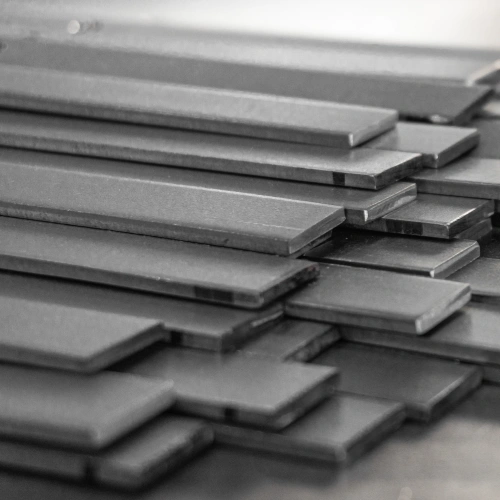Duplex stainless steel performance advantage analysis
Duplex stainless steel, an alloy made up of both austenitic and ferritic phases, has quickly become a preferred material in various industries. Known for its superior strength and outstanding resistance to corrosion, duplex stainless steel offers a unique combination of properties that make it indispensable in challenging environments. Its versatility has led to its adoption in demanding sectors such as oil and gas, marine engineering, chemical processing, and construction.
This article will explore the performance advantages of duplex stainless steel, highlighting why it’s considered a game changer across industries. We’ll also look at its key properties, compare it with other stainless steel types, and discuss its most common applications.

What is Duplex Stainless Steel?
Duplex stainless steel is an alloy that combines both austenitic and ferritic steel phases, giving it a hybrid structure. Typically composed of around 50% austenite and 50% ferrite, this unique combination offers the material benefits from both sides. The austenitic phase provides excellent toughness and ductility, while the ferritic phase contributes to better strength and resistance to stress corrosion cracking.
There are various grades of duplex stainless steel, with 2205 and 2507 being the most widely used. The composition and microstructure of these grades offer a balance of strength, corrosion resistance, and cost-effectiveness, making them ideal for industries requiring materials that can perform under extreme conditions.
Key Performance Advantages of Duplex Stainless Steel
Superior Corrosion Resistance
One of the standout features of duplex stainless steel is its superior corrosion resistance. Its composition makes it highly resistant to common forms of corrosion such as pitting, crevice corrosion, and stress corrosion cracking. This is especially important in industries where equipment is exposed to aggressive environments, such as marine, chemical processing, and offshore oil platforms.
For example, in marine environments, where saltwater exposure is constant, duplex stainless steel is more resistant to corrosion than regular austenitic or ferritic stainless steels. This means that equipment made from duplex steel has a longer lifespan and requires less maintenance.
Enhanced Strength
Duplex stainless steel combines the best properties of both its phases, resulting in higher tensile strength and yield strength compared to other types of stainless steel. It is typically two to three times stronger than conventional austenitic stainless steel. This superior strength allows duplex stainless steel to withstand higher pressures and heavier loads, making it ideal for structural applications and high-stress environments, such as in oil rigs and pressure vessels.
Additionally, its strength-to-weight ratio is advantageous in applications where material weight is a critical factor, such as in shipbuilding and construction.
Improved Fatigue and Impact Resistance
Duplex stainless steel excels in situations where materials are subjected to cyclic loading or impact forces. Its unique microstructure allows it to perform better under fatigue stress and high-impact conditions compared to other stainless steel types. This makes it suitable for applications in environments where parts are subjected to continuous movement or sudden impacts, such as marine vessels, offshore platforms, and chemical reactors.
Cost-Effectiveness
While duplex stainless steel might have a higher initial cost compared to some standard stainless steels, its cost-effectiveness becomes apparent over the long term. The enhanced strength means that thinner sections of material can be used without compromising performance, leading to material savings. Additionally, its exceptional corrosion resistance reduces the need for frequent maintenance and replacement, resulting in lower total lifecycle costs for companies in industries such as petrochemicals and water treatment.
Duplex Stainless Steel vs. Other Stainless Steels
Comparison with Austenitic Stainless Steel
When comparing duplex stainless steel with austenitic stainless steel, the primary difference lies in their performance under stress and corrosion. Austenitic stainless steel, while offering excellent corrosion resistance, lacks the strength that duplex stainless steel provides. As a result, duplex stainless steel is the material of choice for applications where both strength and corrosion resistance are required, such as in marine and chemical industries.
Furthermore, duplex stainless steel offers better resistance to stress corrosion cracking (SCC), a problem that commonly affects austenitic grades when exposed to certain environments, such as chloride-rich conditions.
Comparison with Ferritic Stainless Steel
In comparison with ferritic stainless steel, duplex stainless steel outshines in terms of strength, ductility, and toughness. Ferritic steels tend to be stronger than austenitic types but lack the toughness and flexibility that are crucial in dynamic environments. Duplex stainless steel bridges this gap by providing high strength and better resistance to cracking without sacrificing flexibility.
In terms of corrosion resistance, duplex stainless steel also has a significant advantage, especially in chloride-rich environments, where ferritic steels are more prone to localized corrosion.
Why Duplex Stainless Steel is the Preferred Choice
Overall, duplex stainless steel is the preferred choice for many demanding applications due to its balanced performance—it offers a superior combination of strength, corrosion resistance, and cost-efficiency, making it a better choice than both austenitic and ferritic stainless steels in a variety of environments.
Applications of Duplex Stainless Steel
Oil and Gas Industry
Duplex stainless steel is heavily used in the oil and gas industry, particularly in subsea equipment, pipelines, and refinery components. Its ability to withstand high pressure, corrosive fluids, and extreme temperatures makes it ideal for offshore drilling and subsea pipelines. For example, Grade 2507 duplex steel is commonly used in deep-water offshore rigs due to its exceptional strength and resistance to both chlorides and hydrogen sulfide.
Chemical and Petrochemical Processing
The chemical processing industry relies on duplex stainless steel for its ability to withstand aggressive chemicals, high temperatures, and pressure. It is often used in the construction of reactors, heat exchangers, and storage tanks, where its resistance to corrosion ensures a longer service life and greater reliability.
For example, Grade 2205 duplex stainless steel is ideal for handling acidic or chloride-rich chemicals in environments where austenitic stainless steels might be prone to stress corrosion cracking.
Marine and Offshore Engineering
In marine engineering and offshore construction, duplex stainless steel is used in shipbuilding, offshore platforms, and marine vessels due to its exceptional resistance to sea water corrosion. It’s commonly used for structural components, propellers, and platform supports.
Construction and Architecture
Duplex stainless steel is increasingly being used in architectural and construction projects for its ability to withstand harsh weather conditions. Whether in facades, roofs, or structural supports, duplex steel offers an ideal balance of strength and aesthetic appeal. Its ability to withstand corrosion in outdoor and coastal environments makes it perfect for use in bridges, buildings, and urban infrastructure exposed to the elements.
Duplex stainless steel is rapidly becoming the material of choice in industries requiring a combination of strength, corrosion resistance, and cost-effectiveness. Its unique properties—including high strength, superior corrosion resistance, and long-term durability—make it indispensable in demanding environments such as oil and gas, marine engineering, and chemical processing. Despite its higher initial cost, the long-term benefits make duplex stainless steel a worthwhile investment for industries aiming for efficiency and reliability.
Ready to purchase stainless steel? Contact us today fora quote or o speak with a specialist.We provide high quality stainless steel to your specific needs.
FAQs
Q1: What is duplex stainless steel used for?
Duplex stainless steel is commonly used in industries such as oil and gas, marine engineering, and chemical processing for applications requiring high strength and corrosion resistance.
Q2: How does duplex stainless steel compare to other types of stainless steel?
It offers better strength and corrosion resistance than both austenitic and ferritic stainless steels, making it ideal for harsh and high-stress environments.
Q3: Is duplex stainless steel expensive?
While the material cost is higher, duplex stainless steel offers long-term savings through enhanced durability and reduced maintenance costs.
